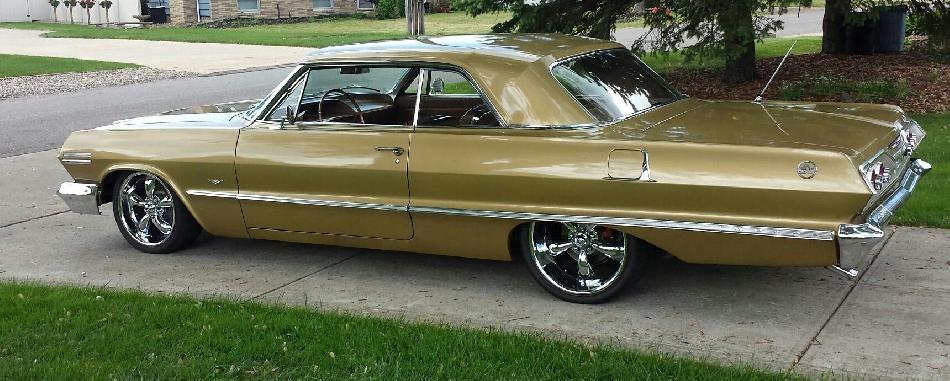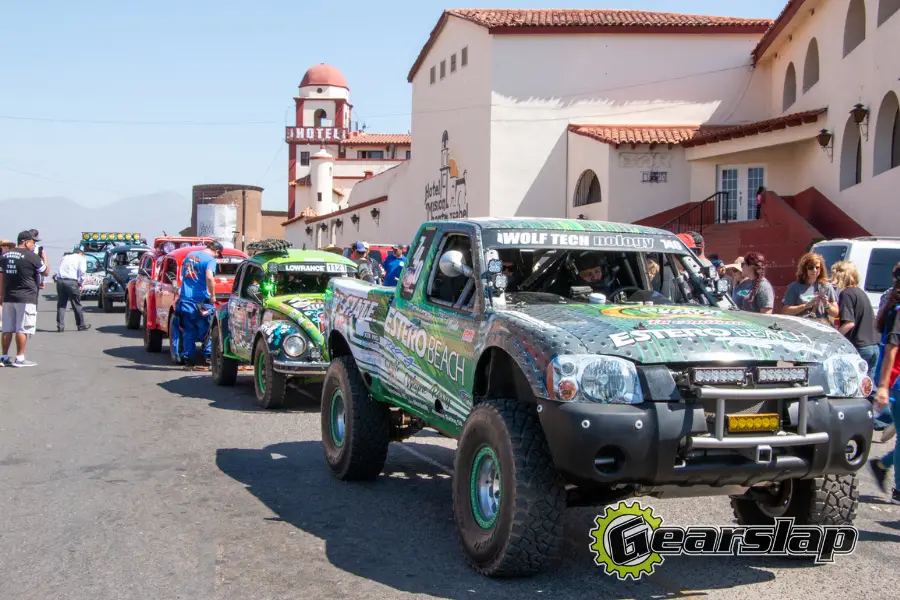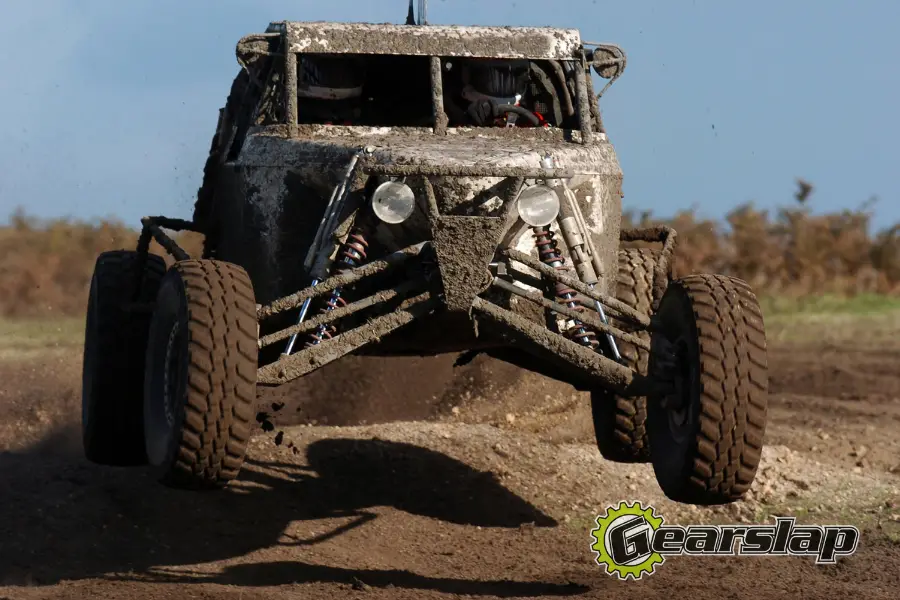The average race car has an impressive top speed of over 200 miles and a maximum horsepower of 750. These cutting-edge speed vehicles can go from 0 to 60 miles per hour in just three seconds.
However, not all race cars are designed for the same purposes. In this article, I’ll list over 25 different types of racers and the factors that make each of them unique. Let’s get started.
Categories of Different Race Cars
Three Main Types of Cars
All categories of race cars fit into three distinct design groups. These are groups are open-wheel cars, closed-wheel cars, and prototypical models.
Open-Wheel Race Cars
Open-wheel cars are easy to distinguish from the rest because the vehicle’s wheels extend outward from the car’s main body. These cars typically only have one seat and a cockpit that shields the driver’s body.
The first open-wheel race car is attributed to racing pioneer Ray Harroun in 1906. That makes the iconic open-wheel car the oldest car model for racing in existence.
Open-wheeled cars are not usually street-legal. They are primarily designed for road races and oval track races. There are some exceptions, however, such as Ariel Atom, a series of street-legal cars made in England.
In terms of design, most open-wheel race cars are focused on precision. The driver is able to see each of the extended front wheels from the cockpit, making it easier for them to execute turns and passing maneuvers. Since open-wheel vehicles are more easily damaged, precision is also necessary to avoid contact with other cars.
Since open-wheel cars are so light, they can reach higher speeds than other race cars. In fact, Formula 1 race cars are some of the fastest open-wheel racers in circulation today. The cost to buy or build a Formula 1 race car stretches anywhere from tens of thousands to over ten million dollars when sourcing all the parts from scratch.
Closed-Wheel Race Cars
Closed-wheel cars are the opposite of open-wheel cars. Their wheels rest inside the car’s main body, behind the fenders. The closed-wheel category includes many iconic race car varieties such as NASCAR stock cars.
Unlike open-wheel racecars, stock cars and other closed-wheel varieties started as modified versions of regular automobiles. Whereas open-wheel cars are designed for racing, closed-wheel cars usually kept the chassis of normal cars but have upgraded engines, tires, and more.
It is much easier to find street-legal versions of closed-wheel cars. Sports cars and supercars are some examples of this. The reasoning behind their legality is likely because closed-wheel cars are practical for most roadways, unlike their open-wheel counterparts.
Today, most closed-wheel race cars are built for racing, but they maintain the aesthetic of normal cars such as sedans. These car types can’t reach the high speeds that formula one cars can, but they are designed for durability in long races. They can withstand damage from the racetrack and from collisions.
In addition, closed-wheel cars have closed cockpits for improved driver safety. There’s also more freedom to move around inside the vehicle, which helps the driver’s physical endurance. The extra space also enables a co-pilot, meaning that more than one person can usually fit in a closed-wheel car.
Because they’re often street-legal and designed like normal cars, closed-wheel cars are much cheaper to buy and build. The engine is the most expensive component of a stock car, but it’s still no match for the million-dollar cost of a formula one engine. An average stock car will cost a few hundred thousand dollars.
Prototype Race Cars
By design, prototype race cars have qualities of standard open and closed-wheel designs. Prototypes are often built strictly to race and are not street legal or open for consumer use.
Often, prototypes are built with specific races in mind, such as the Daytona Prototype International. Regulations for prototype designs depend on the rules of its corresponding race. Because of this, there is a lot of design variety in the prototype group.
Prices for prototype cars are comparable to NASCAR stock car costs. Each is a few hundred thousand dollars to build, but prototypes may be more expensive since they tend to have custom chassis designs.
Open Cockpit and Closed Cockpit
Another classification for race cars is the cockpit style. Open cockpit cars are usually smaller, whereas closed cockpit cars are usually larger on the inside. Open cockpit vehicles aren’t as insulated or safe for their drivers. However. they give the driver a greater field of vision for tough maneuvering.
On the other-hand, closed cockpit cars tend to be more durable at the expense of some visibility. Since closed cockpit race cars are larger on the inside, they help the driver endure long races. Open cockpit designs are better suited to shorter, faster races.
Styles of Race Car
In addition to standard styles, many other racing vehicles are categorized by their designs. Not all racing is performed by standard cars.
For instance, the first official truck race began in 1979. As the name implies, race trucks are modified semi-trucks or heavy tractor units with standard truck beds.
In addition, some types of racing don’t modify the cars at all. Pure race cars are unmodified street cars that participate in organized races. Depending on regulations, modding the engine may be allowed.
Lastly, there are a lot of customizable parts for different racing types, including oversized wheels, wide bodies, wings, and more. Many cars altered in this way aren’t street legal due to their width and are restricted to races and derbies.
Road & Track Automotive Racing
1. Stock Cars
Stock cars are modified commercial cars. They are designed for an oval race track and are commonly used in large NASCAR racing events like the Daytona 500. Since a stock car race can be up to 600 miles, it’s important for each driver to have a reliable and durable car. Stock cars are modified with those traits in mind.
Originally, stock cars were almost always street legal and weren’t too dissimilar to production cars. But today, with advances in technology, engineering, budgets and regulations, stock cars aren’t even close to being street legal. Most professional-level stock cars, like on the NASCAR circuit, cost around $200,000 to build or buy.
2. Formula One & Indy Cars
Formula One and Indy Cars are two kinds of open-wheel vehicles that race on purpose-built tracks. Formula One cars are approved for racing under FIA, whereas Indy cars race under the NTT IndyCar series. Both cars are designed with open cockpits. Each can reach very high speeds, but Formula One cars are traditionally faster than Indy cars.
Produced as racing vehicles only, neither Formula One nor Indy cars are street-legal. Due to various regulations and pricey components, either of these cars can cost a few million to build.
3. Autocross Cars
Autocross is a solo motorsport in which a driver expertly maneuvers a course of difficult turns and obstacles. The driver’s goal is to get through the court as quickly as possible and without collisions. Autocross is prominent in Australia and the United States. Some autocross races take place on road tracks while others might be on dirt tracks.
The type of car used for autocross varies greatly. Some are commercial vehicles without modifications and others are purpose-built for maneuvering. Purpose-built racers are significantly more expensive than repurposed or modified automobiles.
4. Drag Cars
Drag cars are race cars designed to compete in drag races. In a drag race, several pairs of cars will race in one-on-one races one after the other. There are several different types of drag cars.
Funny Cars
Funny cars are drag cars that are designed to resemble vintage showroom models like the 1970 Chevrolet Vega. Unlike other kinds of drag cars, funny cars have engines in front of the driver. This choice is to retain the vintage feeling of the car, as other dragsters with engines in the back have better centers of gravity.
Funny cars are expensive and rare, just like their teams. A funny car’s carbon fiber body can cost tens of thousands by itself. Despite the rarity, funny cars are fully street-legal.
Top Fuel Dragsters
Top Fuel drag cars are typically thin and wedge-shaped race cars. They are designed with intense engine modifications that allow the cars to accelerate up to 100 miles per hour in under a second. The typical Top Fuel race is only 1,000 feet, and record times have finished the race in under four seconds.
These cars are not approved for public roads due to their dangerous acceleration rates. The cost to build a dragster with a Top Fuel engine is a few hundred thousand dollars.
Jet-Powered Dragsters
These insane vehicles are like Top Fuel dragsters, except they’re equipped with a jet engine. Jet-powered drag cars can be seen rarely at drag events
5. Circle Track & Dirt Track
Circle and dirt tracks are designed for cars with great traction and drifting. Many different kinds of race cars participate in these events, including both open-wheel and stock cars. Most of these cars are modified with special dirt track racing tires that improve the car’s grip on the road.
Some types of dirt racing tires are street stock and are approved for street use. Others are purpose-built strictly for racing tracks. The price of these cars is comparable to their oval track counterparts.
6. Drift Cars
Drift cars typically have rear-wheel drive and light builds. Some all-wheel drive racers are modified to have rear-wheel drive for enhanced drifting. Drift cars are rarely purpose-built because the motorsport is more about handling than speed. Because of this, drift cars are easy to access, street legal, and relatively inexpensive.
7. Outlaws/Midgets
Outlaws and midgets are small single-seat cars comparable in size to go-karts. They tend to race on 1/5 mile dirt tracks. Outlaw cars are also called sprint cars. Sprint cars are very distinct as they have two different-sized rear tires. They are built this way to cause the car to stagger, allowing it to turn better on the track.
Parts for these cars aren’t usually sourced from production cars, so they are often expensive to build and buy. They are only approved for use in track racing events.
8. Camion (Truck Cross/Semis)
Truck racing events are like standard oval track races except that the drivers drive modified semi-trucks and other models with beds. The word “camion” originates from Mexico, where truck racing has been popular since the 90s. Truck races are typically around ten laps each with a maximum speed restriction of 100 miles per hour.
Modifying a semi truck for racing can be costly, since the trucks usually shed over 2,000 pounds of weight. Some early models used street tires, but most modded trucks today are not street-legal.
9. Prototype Race Cars
Prototypes are designed for competition in races like the Daytona Prototype International series. Regulations surrounding prototypes have changed repeatedly, but a standard prototype is a single-seat racer smaller than a stock car with a wedged front.
Prototype races are in high demand, but regulations don’t require that prototypes use high-cost carbon fiber components. You might find that prototypes are a fair bit cheaper than stock cars to build or buy.
10. Hooligan/Super Hooligan/Bucket Racing
Hooligan, Super Hooligan, and bucket racing are all forms of motorcycle races. Each form of race has its own subcategories and regulations on costs and modding. Bucket racing was designed in New Zealand to be the “cheapest” style of motocross in existence. Each of the bikes is repurposed and recycled.
While bucket race bikes are extremely cheap to build or buy, Hooligan bikes are heavy-duty and more expensive. Many of both kinds of bikes are acceptable on public motorways.
11. Top Speed Records & Fastest Production Cars
Supercars are stock cars that are modified to test the extremes of land speed. These vehicles are built with upgraded engines that far surpass the ground speed of normal stock cars. The current supercar land speed record is 286 miles per hour.
Off-Road Car Racing
Desert/Baja
1. Off-Road Race Trucks & Factory Race Trucks
The name Baja comes from the first off-road race ever conducted across the desert in Baja, California. Today, trucks are popular choices for off-road racing. The trucks are modified primarily for horsepower and have high-grip tires for crossing rough terrain.
Most off-road trucks are street-legal. Some cars like ATVs don’t need as many modifications as other participating cars, so they might not cost much to mod.
Some major car retailers such as Ford produce their own trucks that are purpose-built for off-road racing, such as the 2021 Ford Bronco. These are stock trucks that come already modified for the sport, usually at the cost of a regular truck.
2. Race Buggies & Truggies
Dune buggies and other small four-wheel drive vehicles are easy to find in desert areas. Racing buggies are modified versions of dune buggies with stronger engines. The small stature of buggies helps them drive more smoothly.
Similarly, a truggy is a heavily modified vehicle with components from both trucks and buggies. A truggy enjoys the stature of a buggy and the powerful engine of a truck, making it a strong specialized vehicle for off-roading. Most buggies and truggies are purpose-built and aren’t street-legal.
3. Prerunners
A prerunner is a second car a racer uses to scout the course before the race. While these cars don’t usually participate in races of their own, they’re built like racing vehicles so that the driver can gauge how the track will perform. Any vehicle including cars, trucks, motorcycles, and buggies can be a prerunner.
A prerunner’s cost and street legality depends entirely on what kind of vehicle it is.
Rallying/Rally-cross Racing
Rallying is a racing format similar to track racing. The key difference is that rally racing takes place on non-paved plots and the course is delineated by a series of cones or markers. Many legal stock and modified rally cars can take park in the races. Builders usually focus on engine strength and tire traction when modifying rally cars.
It only takes a few thousand dollars to build a car fit for a rally race, but competition cars such as those in the World Rally Championships can cost millions to build.
Fastest Mile/Land Speed Vehicles
Purpose-built land speed cars employ jet and rocket propulsion to reach even higher speeds. Some land speed vehicles have succeeded in breaking the sound barrier. These cars are built strictly to set records, employing some of the most expensive and advanced engine modifications in the process.
In 1997, piloting the Thrust SSC jet car, Andy Green broke the land speed record at a speed of 763 miles per hour, making the ThrustSCC the first land vehicle to ever break the sound barrier.
Needless to say, these cars aren’t street-legal, and getting your hands on a jet engine-powered vehicle is very expensive.
Mud Bogging
Mud bogging is a motorsport where cars try to drive through deep mud tracks or mud pits. Cars and trucks with lifted suspensions used to be popular choices for mudding, but today, most competititors drive heavy-duty trucks with tractor tires. Trucks are divided further into separate classes based on their specifications.
Some expensive forms of mudding cars are called Mega Trucks, which are heavily-modded pickup trucks. Street legality in mudding vehicles depends on the suspension and tires drivers choose.
Hill & Rock Climbing
Hill climbing buggies are buggies that drive on uphill courses, either paved or unpaved. Most hill climb events have drivers racing against the clock instead of other cars. Hill climbing buggies and motorcycles are like their stock counterparts but with modifications for traction.
Rock crawling is a much more rugged event where high-powered vehicles navigate courses of disheveled rocks and boulders in a natural environment. The point of the sport is to exercise precision and handling while minimizing penalties. Rock-crawlers are purpose-built buggies that are lightweight and have heavty-duty tires.
Stadium/Arena Auto Racing
Stadium Supertrucks/ Off-Road Short Course
Short course off-road racing trucks compete on dirt tracks in an enclosed arena setting. The courses usually have unleveled terrain through hills and other obstacles, so the motorsport favors high-traction trucks. Supertrucks are definied mostly by their extreme weight. Most supertrucks weigh nearly 1 1/2 tons.
Supertrucks are not street legal and are usually purpose-built for arena or off-road racing.
Monster Trucks
Monster trucks are similar to supertrucks, but they typically aren’t used for standard racing events. Monster truck races are elimination-based, with each driver competing until only one driver remains. Monster truck drivers also compete in stunt events one at a time.
A monster truck is not street-legal and is purpose-built for weight and power. Durability is key in this motorsport. However, since the cars are likely to be damaged, many monster trucks are built from repurposed truck parts from relatively inexpensive sources.
Tractor Pullers
Also known as power pulling, tractor pulling is a motorsport where engines compete to see which vehicle can pull the most weight. Tractor drivers modify standard tractors with incredibly powerful engines. The tractors then pull massive weights on a sled behind them.
There are many different tractor-pulling subclasses that regulate modifications for the tractors. Some of the more expensive stocks can incur costs of over $10,000 for just a motor.
Demolition Derby Cars
Lastly, demolition derbies are non-racing events where drivers compete over car durability. Derbies are elimination-style events where the last car standing wins. Participants will ram their cars into one another in an attempt to eliminate the other drivers.
In a demolition derby, strength and durability are favored most of all. Larger trucks with heavy components tend to last longer than smaller cars. However, since damages are bound to happen, many participants will use repurposed cars or junkers for derbies, which are cheap and easy to find.





